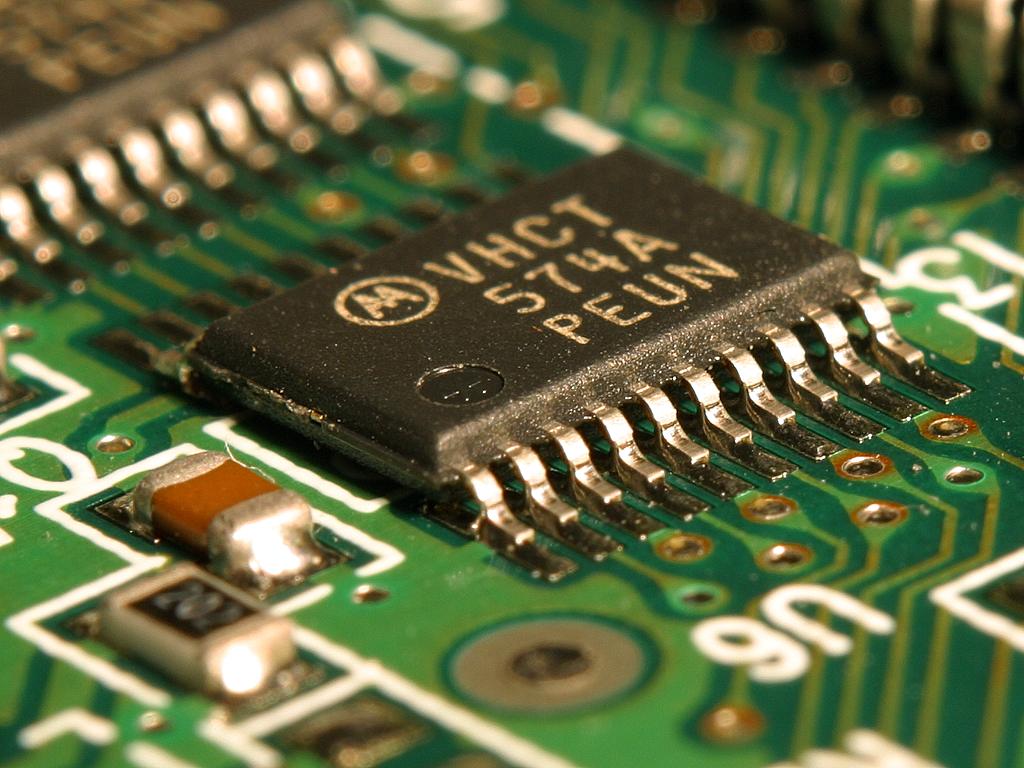|
AMC Amitron
The AMC Amitron was an experimental electric subcompact car built in 1967 by American Motors Corporation (AMC) and Gulton Industries. It included many advanced features, including regenerative braking and advanced battery designs, to provide a range on a single charge. Development ended because of technology issues and the high cost of batteries. In 1977, the prototype was updated and renamed Electron to become one of the automaker's "Concept 80" show cars. American Motors' small concept car was "meant to be a prediction of future subcompact commuter cars." It introduced technologies that included a revolutionary braking system that took 50 years to become common in the automotive industry. Design Impetus Development of the Amitron was prompted by three bills passed by the 89th United States Congress, described collectively as the "Electric Vehicle Development Act of 1966", as well as a fourth bill that amended the Clean Air Act of 1963. The legislation provided funding for ... [...More Info...] [...Related Items...] OR: [Wikipedia] [Google] [Baidu] |
American Motors
American Motors Corporation (AMC; commonly referred to as American Motors) was an American automobile manufacturing company formed by the merger of Nash-Kelvinator Corporation and Hudson Motor Car Company on May 1, 1954. At the time, it was the largest corporate merger in U.S. history. American Motors' most similar competitors were those automakers that held similar annual sales levels such as Studebaker, Packard, Kaiser Motors, and Willys-Overland. Their largest competitors were the Big Three— Ford, General Motors, and Chrysler. American Motors' production line included small cars - the Rambler American which began as the Nash Rambler in 1950, Hornet, Gremlin, and Pacer; intermediate and full-sized cars, including the Ambassador, Rambler Classic, Rebel, and Matador; muscle cars, including the Marlin, AMX and Javelin; and early four-wheel drive variants of the Eagle and the Jeep Wagoneer, the first true crossovers in the U.S. market. Regarded as "a small company deft ... [...More Info...] [...Related Items...] OR: [Wikipedia] [Google] [Baidu] |
Metuchen, New Jersey
Metuchen ( ) is a suburban borough in Middlesex County, New Jersey, United States. The borough is a commuter town of New York City, located in the heart of the Raritan Valley region within the New York Metropolitan area. The borough, along with Edison (which completely surrounds Metuchen), is a regional commercial hub for Central New Jersey. The borough is northeast of New Brunswick, southwest of Newark, southwest of Jersey City, and southwest of Manhattan. As of the 2010 United States Census, the borough's population was 13,574,DP-1 - Profile of General Population and Housing Characteristics: 2010 for Metuchen borough, Middlesex County, New Jersey , |
Rambler American
The Rambler American is a compact car that was manufactured by the American Motors Corporation (AMC) between 1958 and 1969. The American was the second incarnation of AMC forerunner Nash Motors' compact Rambler that was introduced in 1950 and marketed after the merger with Hudson Motors under both marques during the 1954 and 1955 model years. The Rambler American can be classified into three distinct model year generations: 1958–1960, 1961–1963, and 1964 until 1969. During the entire length of its production, the car was sold under the Rambler brand and in 1969 became the last Rambler-named automobile marketed in the Canadian and United States markets. The compact Rambler American was most often the lowest priced car built in the U.S. It was popular for its economy in ownership, as was proven by numerous Mobilgas Economy Run championships. After an optional second-generation AMC V8 engine was added in late 1966, the cars also became known as a powerful compact "muscle" ... [...More Info...] [...Related Items...] OR: [Wikipedia] [Google] [Baidu] |
Powertrain
A drivetrain (also frequently spelled as drive train or sometimes drive-train) is the group of components that deliver mechanical power from the prime mover to the driven components. In automotive engineering, the drivetrain is the components of a motor vehicle that deliver power to the drive wheels. This excludes the engine or motor that generates the power. In marine applications, the drive shaft will drive a propeller, thruster, or waterjet rather than a drive axle, while the actual engine might be similar to an automotive engine. Other machinery, equipment and vehicles may also use a drivetrain to deliver power from the engine(s) to the driven components. In contrast, the powertrain is considered to include both the engine and/or motor(s) as well as the drivetrain. Function The function of the drivetrain is to couple the engine that produces the power to the driving wheels that use this mechanical power to rotate the axle. This connection involves physically linking the ... [...More Info...] [...Related Items...] OR: [Wikipedia] [Google] [Baidu] |
Solid-state Electronics
Solid-state electronics means semiconductor electronics: electronic equipment using semiconductor devices such as transistors, diodes and integrated circuits (ICs). The term is also used as an adjective for devices in which semiconductor electronics that have no moving parts replace devices with moving parts, such as the solid-state relay in which transistor switches are used in place of a moving-arm electromechanical relay, or the solid-state drive (SSD) a type of semiconductor memory used in computers to replace hard disk drives, which store data on a rotating disk. History The term "solid-state" became popular at the beginning of the semiconductor era in the 1960s to distinguish this new technology based on the transistor, in which the electronic action of devices occurred in a solid state, from previous electronic equipment that used vacuum tubes, in which the electronic action occurred in a gaseous state. A semiconductor device works by controlling an electric current ... [...More Info...] [...Related Items...] OR: [Wikipedia] [Google] [Baidu] |
Lead–acid Battery
The lead–acid battery is a type of rechargeable battery first invented in 1859 by French physicist Gaston Planté. It is the first type of rechargeable battery ever created. Compared to modern rechargeable batteries, lead–acid batteries have relatively low energy density. Despite this, their ability to supply high surge currents means that the cells have a relatively large power-to-weight ratio. These features, along with their low cost, make them attractive for use in motor vehicles to provide the high current required by starter motors. Lead-acid batteries suffer from relatively short cycle lifespan (usually less than 500 deep cycles) and overall lifespan (due to the "double sulfation" in the discharged state). As they are inexpensive compared to newer technologies, lead–acid batteries are widely used even when surge current is not important and other designs could provide higher energy densities. In 1999, lead–acid battery sales accounted for 40–50% of the value from ... [...More Info...] [...Related Items...] OR: [Wikipedia] [Google] [Baidu] |
Regenerative Brake
Regenerative braking is an energy recovery mechanism that slows down a moving vehicle or object by converting its kinetic energy into a form that can be either used immediately or stored until needed. In this mechanism, the electric traction motor uses the vehicle's momentum to recover energy that would otherwise be lost to the brake discs as heat. This method contrasts with conventional braking systems. In those systems, the excess kinetic energy is converted to unwanted and wasted heat due to friction in the brakes, or with rheostatic brakes, where the energy is recovered by using electric motors as generators but is immediately dissipated as heat in resistors. In addition to improving the overall efficiency of the vehicle, regeneration can significantly extend the life of the braking system as the mechanical parts will not wear out quickly. General principle The most common form of regenerative brake involves an electric motor functioning as an electric generator. In elect ... [...More Info...] [...Related Items...] OR: [Wikipedia] [Google] [Baidu] |
Electrical Generator
In electricity generation, a generator is a device that converts motive power (mechanical energy) or fuel-based power (chemical energy) into electric power for use in an external circuit. Sources of mechanical energy include steam turbines, gas turbines, water turbines, internal combustion engines, wind turbines and even hand cranks. The first electromagnetic generator, the Faraday disk, was invented in 1831 by British scientist Michael Faraday. Generators provide nearly all of the power for electric power grids. In addition to electromechanical designs, photovoltaic and fuel cell powered generators utilize solar power and hydrogen-based fuels, respectively, to generate electrical output. The reverse conversion of electrical energy into mechanical energy is done by an electric motor, and motors and generators have many similarities. Many motors can be mechanically driven to generate electricity; frequently they make acceptable manual generators. Terminology Electromagnetic ... [...More Info...] [...Related Items...] OR: [Wikipedia] [Google] [Baidu] |
Electric Motor
An electric motor is an Electric machine, electrical machine that converts electrical energy into mechanical energy. Most electric motors operate through the interaction between the motor's magnetic field and electric current in a Electromagnetic coil, wire winding to generate force in the form of torque applied on the motor's shaft. An electric generator is mechanically identical to an electric motor, but operates with a reversed flow of power, converting mechanical energy into electrical energy. Electric motors can be powered by direct current (DC) sources, such as from batteries, or rectifiers, or by alternating current (AC) sources, such as a power grid, Inverter (electrical), inverters or electrical generators. Electric motors may be classified by considerations such as power source type, construction, application and type of motion output. They can be powered by AC or DC, be Brushed motor, brushed or Brushless motor, brushless, single-phase, Two-phase electric power, two-p ... [...More Info...] [...Related Items...] OR: [Wikipedia] [Google] [Baidu] |
Electric Power
Electric power is the rate at which electrical energy is transferred by an electric circuit. The SI unit of power is the watt, one joule per second. Standard prefixes apply to watts as with other SI units: thousands, millions and billions of watts are called kilowatts, megawatts and gigawatts respectively. A common misconception is that electric power is bought and sold, but actually electrical energy is bought and sold. For example, electricity is sold to consumers in kilowatt-hours (kilowatts multiplied by hours), because energy is power multiplied by time. Electric power is usually produced by electric generators, but can also be supplied by sources such as electric batteries. It is usually supplied to businesses and homes (as domestic mains electricity) by the electric power industry through an electrical grid. Electric power can be delivered over long distances by transmission lines and used for applications such as motion, light or heat with high efficiency. ... [...More Info...] [...Related Items...] OR: [Wikipedia] [Google] [Baidu] |
Lithium
Lithium (from el, λίθος, lithos, lit=stone) is a chemical element with the symbol Li and atomic number 3. It is a soft, silvery-white alkali metal. Under standard conditions, it is the least dense metal and the least dense solid element. Like all alkali metals, lithium is highly reactive and flammable, and must be stored in vacuum, inert atmosphere, or inert liquid such as purified kerosene or mineral oil. When cut, it exhibits a metallic luster, but moist air corrodes it quickly to a dull silvery gray, then black tarnish. It never occurs freely in nature, but only in (usually ionic) compounds, such as pegmatitic minerals, which were once the main source of lithium. Due to its solubility as an ion, it is present in ocean water and is commonly obtained from brines. Lithium metal is isolated electrolytically from a mixture of lithium chloride and potassium chloride. The nucleus of the lithium atom verges on instability, since the two stable lithium isotopes foun ... [...More Info...] [...Related Items...] OR: [Wikipedia] [Google] [Baidu] |








